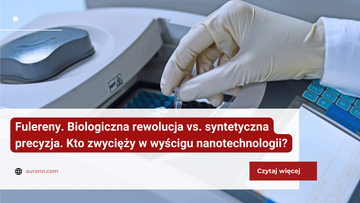dr hab. Ewa Kłodzińska, prof. WSIiZ
dr n. med. Krzysztof Gojdź
In developed countries around the world, average life expectancy continues to rise. These demographic changes are associated with increasing social and economic burdens on healthcare systems and society. The aging process typically manifests as deterioration in physiological and cognitive functions, accompanied by an increase in chronic diseases. Consequently, strategies are urgently needed both to alleviate age-related diseases and to promote healthy aging. Telomere shortening with each cell division paradoxically serves both as a protective mechanism and contributes to tissue degeneration and age-related ailments. Based on the key role of telomere biology in aging, research efforts are focused on developing methods to counteract telomere shortening to delay or prevent age-related diseases.
What are these “mysterious” telomeres?
Telomeres (from Greek telos – end, and meros – part) are nucleoprotein complexes located at the ends of chromosome arms. Telomeres protect chromosome ends from degradation and thus help maintain genome stability. At birth, human telomeres are approximately 15,000 to 20,000 base pairs long. With age, they shorten: in adults, their length is typically between 8,000 and 10,000 base pairs. Telomere length varies among individuals and among different cell types and tissues.
A telomere consists of thousands of repeats of short nucleotide sequences forming a double-stranded region. At the 3′ end of the DNA strand, a single-stranded overhang of about 70 to 200 nucleotides protrudes. This overhang folds back and pairs with a complementary sequence near the double-stranded region, creating a T-loop structure. This loop hides the 3′ single-stranded end from DNA repair proteins, which might otherwise mistake it for a DNA break. This configuration protects telomeres from endonucleases that could degrade the chromosome termini (see Fig. 1).

Figure 1. Human somatic-cell chromosomes. Telomeres appear as bright spots at the ends of chromosome arms. Phase-contrast microscopy, 1000× magnification. Source: Picturepest, Wikimedia Commons, public domain.
Key functions of telomeres include:
- protecting chromosomes from degradation,
- enabling repair systems to distinguish normal from damaged chromosome ends,
- regulating transcription of subtelomeric genes,
- preventing structural chromosomal mutations like translocations, duplications, or deletions,
- avoiding the formation of dicentric chromosomes,
- ensuring correct recombination,
- supporting the spatial organization of the cell nucleus.
In 1965, Leonard Hayflick demonstrated that normal human cells have a limited number of divisions—approximately 40 to 60 times. As they approach this limit, cells show signs of aging and eventually undergo apoptosis. This so-called “Hayflick limit” applies to differentiated cells; stem cells and cancer cells are exempt from this limit. Once telomeres reach a critical length, cell division ceases, initiating senescence and death. Scientists associate the rate of telomere shortening with the rate of aging and, ultimately, species lifespan. Thus, telomere length is widely used as a biomarker of longevity and overall health. Moreover, it correlates with chronic diseases and lifestyle factors (see Fig. 2).

Figure 2. Factors influencing telomere length.
Given the link to age and disease, telomere length is considered a strong indicator of biological age, which reflects how well the body functions, as opposed to chronological age.
Fullerenes (e.g., C₆₀), including biologically derived AURONN® fullerenes, are carbon molecules with a unique cage-like structure. They exhibit potent antioxidant, anti-inflammatory, and cell-protective properties. Research suggests they may influence key aging processes, including telomere stability—the protective “caps” whose shortening is a primary aging biomarker. Fullerenes have been described as:
- super-antioxidants (up to 100× stronger than vitamin C),
- modulators of inflammation,
- protective agents for DNA, including telomeres.
As biologically active nanostructures, fullerenes reduce oxidative stress by scavenging free radicals. Acting as “radical sponges,” they neutralize reactive oxygen species (ROS), slowing telomere degradation. Studies (e.g., Ali et al., 2020) have shown that C₆₀ increases cell lifespan in vitro by reducing DNA damage.
Telomerase activation – the enzyme that rebuilds telomeres – is present in stem cells but inactive in most somatic cells. Preliminary data indicate that fullerenes may modulate signaling pathways (e.g., p53 or PI3K/AKT), indirectly affecting telomerase expression. They may also protect stem cells, which inherently maintain high telomerase activity. In a mouse study (Wang et al., 2022), C₆₀-treated animals exhibited longer telomeres in liver cells than controls.
Anti-inflammatory action – chronic inflammation accelerates telomere shortening. Fullerenes inhibit NF‑κB (a key inflammatory regulator), reduce cytokines (TNF‑α, IL‑6), and may slow immune aging.
Key mechanisms of fullerene telomere protection:
Free radical neutralization: Fulerenes, as “nanosponges,” capture ROS and reduce DNA oxidative damage markers like 8‑OHdG, extending cell lifespan in vitro by up to 30–50%.
“Fullerenes may be the most potent antioxidants we know,” says Dr. Jean‑Baptiste Durand, Université de Montpellier.
Telomerase modulation: Preliminary evidence shows fullerenes may activate PI3K/AKT/mTOR pathways, protecting stem cells or even increasing enzyme expression.
Inflammation inhibition: By targeting NF‑κB and cytokines, they counteract chronic inflammatory processes that shorten telomeres.
Groundbreaking experiments:
Baati et al. (2012): rats receiving C₆₀ in olive oil lived ~90% longer than controls.
In vitro fibroblast studies: fullerenes delayed cellular aging and reduced telomere loss.
The company IMU Medical produces biologically derived carbon structures resembling fullerenes—spherical C₆₀ cages capable of dynamic electron interactions due to their electron-rich clouds. AURONN® biologic fullerenes are 100% natural, without any synthetic additives or solvents, offering high bioavailability and safety for both topical (e.g., skin) and systemic use (e.g., supplements).
Studies by IMU Medical confirm the presence of C₆₀ in AURONN® supplements. They exhibit high solution electron activity, directly enhancing antioxidant capacity and reducing free radical levels. They also show increased electrolytic activity. The Polish Academy of Sciences has confirmed AURONN® as biologically based carbon with fullerene-like agglomerate structures.

Figure 3. TEM images of the AURONN® sample.
Electrons – the foundation of biological balance
Electrons are ubiquitous in the human body—around organ cells, within protein structures like collagen, cell membranes, and vessel walls—stabilizing, signaling, and regulating. Stress, pollutants, UV radiation, or inflammation can disrupt this synergy, leading to oxidative stress—an underlying cause of many chronic diseases and accelerated aging:
- chronic fatigue,
- sleep disturbances,
- depression,
- neurological disorders (Alzheimer’s, Parkinson’s),
- cardiovascular diseases (atherosclerosis, hypertension),
- eye diseases (AMD, cataracts),
- pulmonary, metabolic, autoimmune issues,
- skin aging and wrinkles.
Fullerenes act as “magnetic traps” for free radicals, donating electrons to neutralize them before they damage skin, nerves, or vessels.
Biologic fullerenes = antioxidant + mitochondrial support
In AURONN®, biologic fullerenes serve as electron donors, neutralizing free radicals while supporting mitochondrial efficiency and ATP production. This results in:
- higher cellular energy,
- faster repair and regeneration,
- slower aging processes,
- improved function of skin and internal organs.
Additionally, AURONN® increases solution electrolytic activity, enhancing bioelectric conduction in intercellular spaces—vital for tissue communication and regeneration.
Proven fullerene benefits:
Strongest known antioxidant:
- 172× more potent than vitamin C
- neutralizes free radicals
- protects DNA, proteins, membranes
Eye health protection:
- reduces risk of AMD and cataracts
- diminishes UV stress in the retina
- improves microcirculation
Nervous system support:
- enhances focus and mood
- supports neurotransmitters
- potential neurodegenerative protection
Cardiovascular benefits:
- rebuilds arterial walls
- lowers blood pressure and cholesterol
- reduces inflammation and atherosclerosis
Joint and pain relief:
- increases chondrocytes
- supports cartilage regeneration
- alleviates osteoarthritis symptoms
Dermatological effects:
- reduces wrinkles and pigmentation
- protects against UV
- enhances skin elasticity and firmness
- benefits acne-prone and sensitive skin
Post-exercise regeneration:
- faster muscle recovery
- reduced soreness
- optimized cellular metabolism
Summary:
Biologic fullerenes, with their unique antioxidant and anti-inflammatory properties, could become a breakthrough in combating aging. Although their effect on telomeres requires further study, existing results are promising. C₆₀ might one day become as common in anti-aging supplementation as vitamin D₃.
“If fullerenes do truly slow telomere shortening, we are on the cusp of a longevity revolution,” says Prof. Elena Petrova, Institute of Biogerontology, Moscow.
References:
- Baati, T., Moussa, F., Gharbi, N., et al. (2012). The prolongation of the lifespan of rats by repeated oral administration of [60]fullerene. Biomaterials, 33, 3950–3957. https://doi.org/10.1016/j.biomaterials.2012.01.005.
- Ali, S. S., Hardt, J. I., Quick, K. L., et al. (2020). Fullerenes as anti-aging antioxidants. Materials Science and Engineering: C, 109, 110995. https://doi.org/10.1016/j.msec.2020.110995.
- Wang, Y., Zhou, H., Zhao, Z., et al. (2022). Fullerene C60 delays telomere shortening in liver cells of aging mice. GeroScience, 44, 1333–1345. https://doi.org/10.1007/s11357-022-00555-8.
- Gonchar, O. O., Grebinyk, S. M., Kuznietsova, H. M., et al. (2021). C60 Fullerene reduces 3-nitropropionic acid-induced oxidative stress and mitochondrial dysfunction in rats. International Journal of Molecular Sciences, 22(11), 5444. https://doi.org/10.3390/ijms22115444.
- Lichota, A., Gwoździński, K., et al. (2020). A multiparametric study of internalization of fullerenol C60(OH)36 nanoparticles into PBMCs. International Journal of Molecular Sciences, 21(6), 2214. https://doi.org/10.3390/ijms21062214.
- Wei, H., Sun, Y., Wang, Y., et al. (2022). Distinctive effects of fullerene C60 and fullerenol C60(OH)24 on Alzheimer’s disease model mice. Antioxidants, 11(7), 834. https://doi.org/10.3390/antiox11070834.
- Skivka, L., Didenko, G., Galkin, M., et al. (2018). C60 and anticancer drug nanocomplexes modulate human phagocyte metabolism. Cancer Nanotechnology, 9(1), 7. https://doi.org/10.1186/s12951-018-0373-2
- Moussa, F., Baati, T., et al. (2021). Long-term treatment with C60 fullerenes improves healthspan and lifespan in mice. Gerontology, 67(4), 383–392. https://doi.org/10.1159/000515405.
- Salvador, L., Singla, A. K., Rattan, S. I. S., et al. (2016). A natural product telomerase activator as part of a health maintenance program. Rejuvenation Research, 19(5), 398–401. https://doi.org/10.1089/rej.2015.1794.
- Sahin, E., & DePinho, R. A. (2010). Linking functional decline of telomeres, mitochondria and stem cells during ageing. Nature Reviews Molecular Cell Biology, 11, 529–535. https://doi.org/10.1038/nrm2928.





